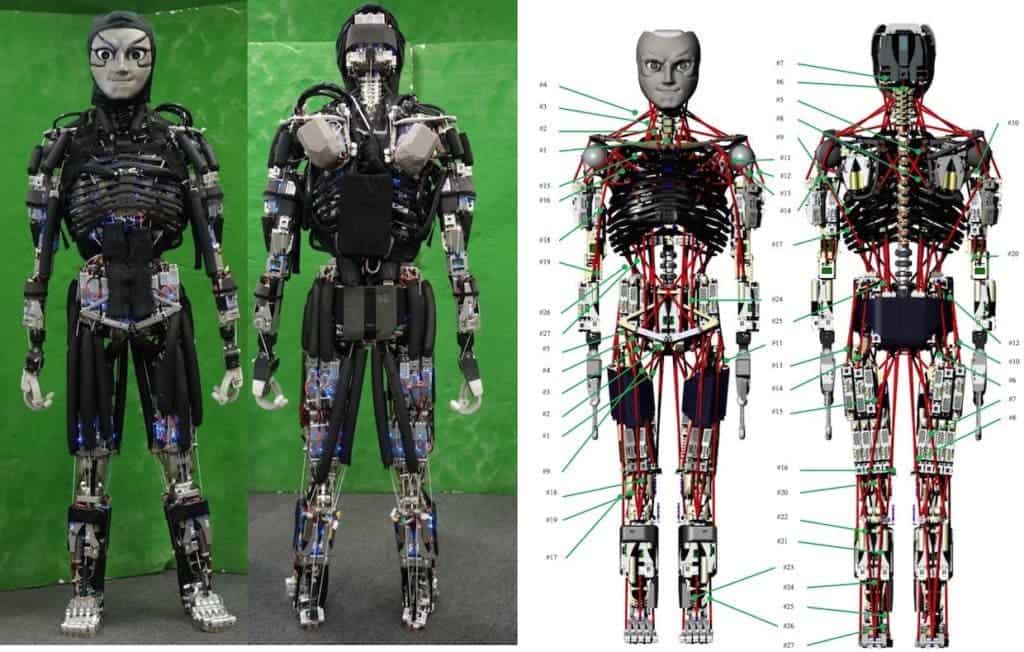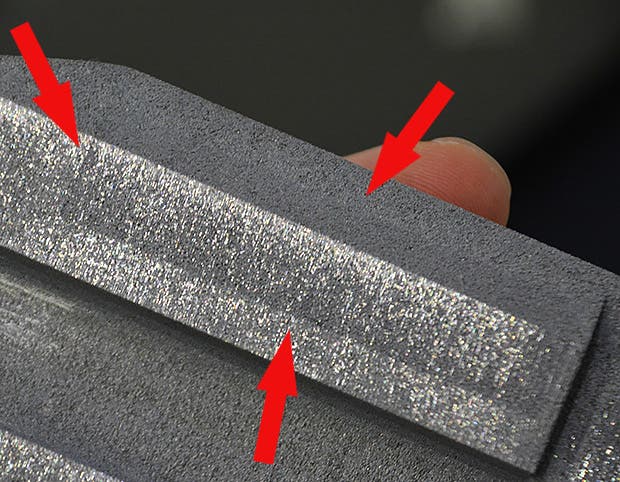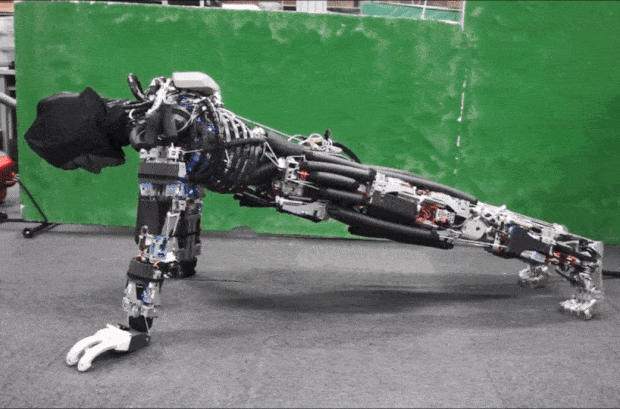Japanese researchers were looking for a novel cooling method, one that goes beyond traditional fans and liquid coolers. They eventually got back to the basics: sweating, our body’s preferred mode to keep us cool and functioning even when we’re under tremendous physical strain. As it performs routines that require a lot of torque and release a ton of heat, the Kengoro robot stays in tip-top shape by letting water ooze out of its metal frame. Out on the surface, the warm water evaporates, cooling the robot’s intricate electronic and mechanical components.
Cooling muscles the old fashion way
The 1.7-meter-tall Kengoro is a big piece of work. It’s packed with hydraulic actuators, circuitry, controllers, and no fewer than 108 motors. Just looking at it doing frigging push-ups is enough to understand its level of sophistication.

Kengoro is a very sophisticated muscoloskeletal humonoid robot. Cooling it proved to be a challenge but the solution the Japanese researchers found was extremely elegant. Credit: JSK Lab/University of Tokyo
Like any machinery, however, Kengoro needed cooling, Being full to the brim with his mechanical muscles meant there was little room left for fans, radiators, or water tubes. Instead, researchers at University of Tokyo’s JSK lab used an exotic yet familiar cooling method — they let water out through its metal frame. So, the robot essentially sweats.
As you might imagine, this took a bit of thinking outside the box. You can’t just plug some holes in the metal frame and pump water through it. The water would just drip.
Kengoro’s ‘skeleton’ is made from aluminum with each ‘bone’ or component 3-D printed using a laser that sintered the powdered metal. What’s interesting about this 3D printing technique is that you can vary the intensity of the laser pulse and with it the density of the resulting metal body once it cools down. This way, the researchers could make metal frames comprised of layers of various degrees of permeability. In the picture below you can get an idea of what I’m referring to.

The red arrows point to an area with a slightly different texture than the rest of the metal body. Those are actually very tiny channels that help ooze water to the surface. Credit: JSK Lab/University of Tokyo
Using this setup, water pumped through the hollow tubes would seep from an inner porous layer into an even more porous layer, ultimately reaching the surface of the metal frame.
Tests ran so far found this method works three times better than air cooling. It’s also better at keeping the robot cool than just circulating water through the inner channels of the frame. However, it’s not as effective as using traditional radiators and fans for active cooling, but it’s a small price to pay. Even so, Kengoro can do push-ups for 11 minutes straight before burning out.
Like humans, Kengoro also needs to stay hydrated. The robot can run for half a day on only a cup of deionized water but requires more if you push him.
Kengoro, the humanoid robot, was presented at the 2016 IEEE/RSJ International Conference on Intelligent Robots and Systems.










